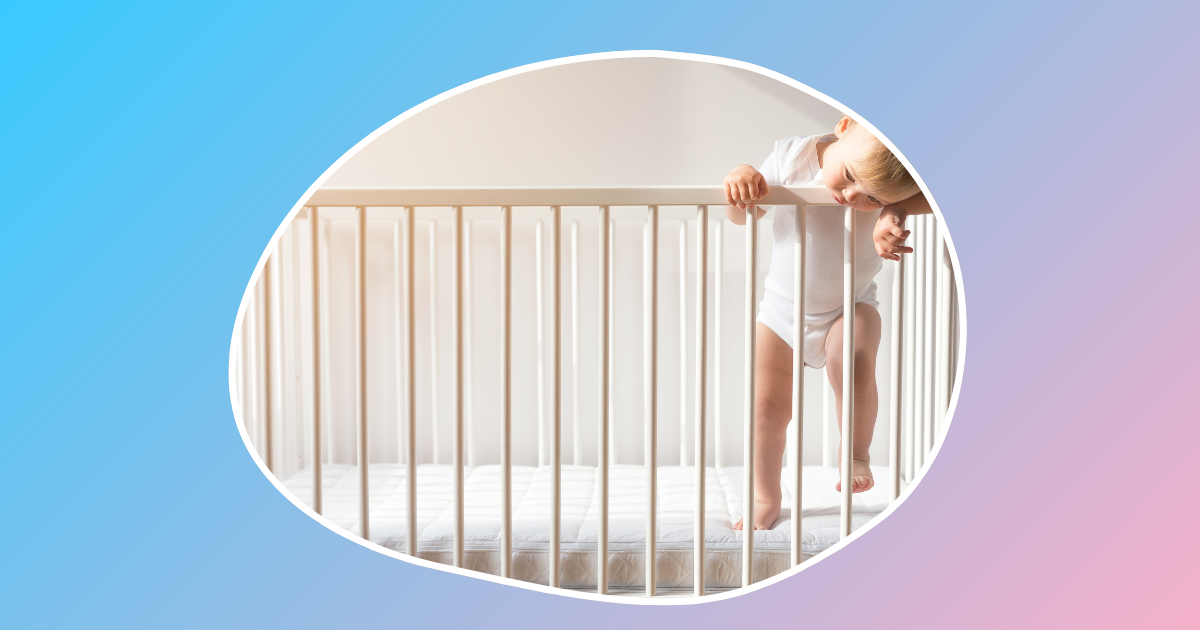[ad_1]
- ASTM/CPSC standards ensure baby products meet rigorous safety testing for peace of mind.
- CPSC regulates various infant & toddler items like cribs and high chairs to prevent accidents.
- Missing ASTM/CPSC designation on a product could indicate potential safety risks – a red flag for parents.
Now that you’re a parent, safety is a top priority. And that means choosing baby products that follow strict standards. From the crib that your little one sleeps in to the toys that they play with, you want to make sure that everything your kiddo uses is safe.
Along with JPMA, GREENGUARD, and other certifications, you’ve seen the acronym ASTM/CPSC more than a few times on the items you buy for baby. But what do these letters stand for and why are they important for parents to understand? We’ve got answers!

What ‘JPMA-Certified’ Means And Why It’s Important When Buying Baby Gear
Up the ante on home safety and learn what JPMA-certified means, and why you should look for JPMA-certified baby gear!
What does ASTM mean?
For years the letters ASTM stood for the American Society for Testing and Materials. But the organization is now only known as ASTM International. ASTM currently has more than 12,000 standards in use around the world. While these do include safety standards for infant and child products, the list goes well beyond what you need to buy for your kiddo.
ASTM standards include testing and guidelines for safety. These vary by product type and can include federal or other national measures. Some federal laws, such as the law governing children’s toy safety, require products to meet specific ASTM standards. ASTM F963 is the Toy Safety standards that the government requires all manufacturers that sell toys in America to follow. This standard addresses choking, sharp edge, and other similar risks a toy could pose to a young child.
Other ASTM standards include safety requirements and testing methods for infant feeding support, cribs, crib mattresses, playards, infant floor seats, carriages/strollers, and other products you may use every day with or for your child.
The Best Outlet Covers To Help Keep Your Little One Safe
Baby-proofing your home can feel like a big task but simple steps. Here are the best outlet covers to help keep your little one safe.
What does CPSC mean?
CPSC stands for the Consumer Product Safety Commission. This commission is part of the U.S. federal government. The CPSC issues and enforces certain safety standards – including some that help to prevent infant, toddler, or child product-related accidents.
While the CPSC doesn’t only create and maintain standards for infant/toddler items, the agency does help to regulate the production of plenty of products your little one will need. These include:
- Changing products
- Bassinets/cradles
- Cribs
- Crib mattresses
- Playards
- Baby gates and enclosures
- High chairs
- Toddler beds
- Stationary activity centers
- Infant walkers, infant swings
- Infant sleep products
- Bouncer seats
- Hand-held infant carriers
- Sling carriers
Along with these products, the CPSC regulates or sets standards for additional categories of infant and toddler products. This makes it important to factor any baby item’s CPSC standing into your next product choice!
7 Best Baby Thermometers For A Quick, Accurate Read
When your baby isn’t feeling well, having a quick, accurate way to check their temperature makes a big difference. Here are the best baby thermometers
Why should I look for ASTM/CPSC standards?
Safety is the main reason to look for ASTM/CPSC standards. These standards let you know that a product has undergone strict testing and follows industry-related best practices. Even though a product that meets these standards is not guaranteed to keep your baby or toddler safe 100 percent of the time, the rigorous testing processes required help weed out inferior products that could pose choking, strangulation, injury, or other risks.
And, keep in mind, some products – such as toys – are required to follow these standards. Failure to have an ASTM or CPSC designation may mean that the toy (or other infant item) isn’t safe for your child to use. While this doesn’t necessarily mean the product is dangerous or will cause harm, if the item does not follow these standards it may not meet federal or industry expectations.
A missing ASTM/CPSC is often a red flag that should stick out to you as a possible warning to avoid the product and continue your baby/toddler gear search.
[ad_2]